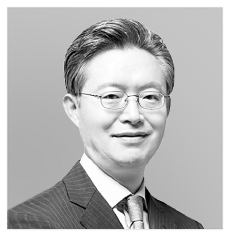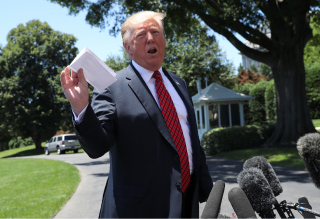When the bromance ends

The author is a former Special Representative for Korean Peninsula Peace and Security and former ambassador to the UK.
Despite the historic get-together in the truce village of Panmunjom of the leaders of the two Koreas and the United States during U.S. President Donald Trump’s visit to South Korea late last month, no meaningful step has been made on the denuclearization front beyond the first summit between North Korean leader Kim Jong-un and Trump in June 2018. The North Korean nuclear problem is heading towards its biggest inflection point in 30 years. The next one or two years could shape the future of the Korean people on both sides of the border. Therefore we must not forget the following points.
First, North Korea is unlikely to entirely surrender its nuclear weapons, even if it agrees to dismantle the Yongbyon complex and other nuclear facilities. The primary goal of North Korea’s nuclear weapons program is a deterrence of American strikes. Therefore, it won’t give up its intercontinental ballistic missiles’ ability to strike the U.S. mainland with nuclear warheads.
Second, no American leader will tolerate a country posing a danger through perfecting long-range nuclear missiles. This is different from condoning the mid-range nuclear capabilities of India and Pakistan, as North Korea is aiming its weapons at Washington. The Pyongyang regime is undeniably under the world’s most ruthless dictatorship — the Kim family — and poses the additional danger of selling its nuclear weapons to anti-U.S. states and terrorist forces in the Islamic community.

U.S. President Donald Trump holds up what he describes as a letter from North Korean leader Kim Jong-un as he speaks to the news media on the South Lawn of the White House in Washington, June 11, 2019. [REUTERS/YONHAP]
Fourth, Trump wants to keep the North Korean nuclear issue under control as least until he wins his second term. Once he is re-elected, he could shift direction with U.S. interests in mind.
Fifth, international sanctions won’t entirely destroy the North Korean economy or threaten the Kim Jong-un regime as long as China watches its back.
Taking these variants into account, the peace mood will likely be sustained until the U.S. presidential election in November 2020. There could be some progress in the denuclearization talks. The United States, China and North Korea all need such progress for different reasons. Pyongyang won’t dare to cross the red line, as completing ICBMs with nuclear warheads could trigger a U.S. military move. Even if North Korea has nearly developed such ICBMs, it will do all it can to hide them. Beijing might have advised Pyongyang not to cross the red line for fear of a U.S. military engagement, while it continues to support the Kim Jong-un regime. Ironically, the common fear of the two superpowers is what keeps the Korean Peninsula from the worst case scenario.
The question is how long this status quo will last. If North Korea flitters around the brink forever, there will be no fundamental change to the geopolitical dilemma around Korea. Although North Korean nuclear weapons will remain a constant threat, they will not likely pose a significant threat to U.S. military engagement in Northeast Asia or its nuclear umbrella.
However, a living organism cannot stand still forever. Given the irreversibility of intelligence and technology, North Korea is more likely to move forward than backward. As soon as it is confident in its ability to strike Washington, the Korea Peninsula will fall into crisis. Trump wants to push back that time until his re-election. That’s why he dotes on the North Korean leader. His attachment will cool as soon as he doesn’t need Kim for political gain.
A superpower like America prioritizes national strategy. It can take a pre-emptive action on the Korean Peninsula today to remove the possibility of a nuclear bomb falling on its territory. It can seal off North Korea. How ready are we for such gruesome scenarios? Is Seoul discussing strategic options and measures with Washington? Are any state institutions in our country preparing the potentiality for our own nuclear deterrence capability up to the level of Japan just in case the U.S. nuclear umbrella weakens? What would our future look like if the government only sticks to wishful thinking in diplomacy and defense as we face a danger we have never seen before?
Translation by the Korea JoongAng Daily staff.
JoongAng Ilbo, July 17, Page 29










with the Korea JoongAng Daily
To write comments, please log in to one of the accounts.
Standards Board Policy (0/250자)